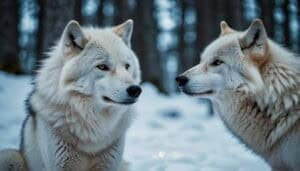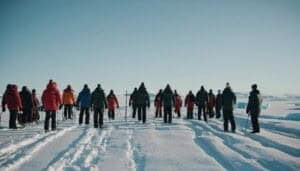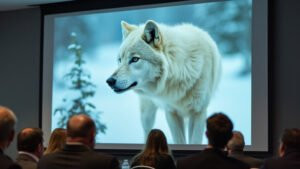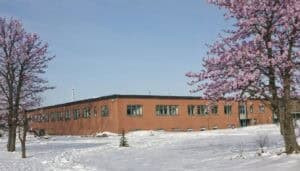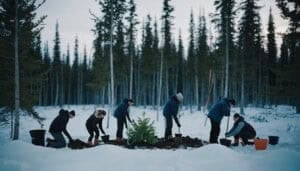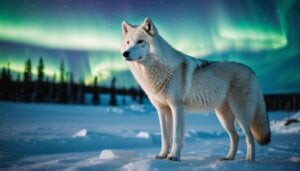Introduction
Arctic wolf conservation is a critical area that relies heavily on the dedication and efforts of volunteers. Various organizations across the globe offer opportunities for individuals to contribute to the preservation of these majestic animals
This article will explore the key organizations involved in Arctic wolf conservation, the roles volunteers can take on, the details of long-term and remote volunteer programs, the skills and training required, and the costs associated with volunteering
Additionally, we will discuss the contributions volunteers make to conservation efforts, the challenges they face, and the impact of their work on Arctic wolf populations
Key Organizations and Volunteer Roles
Arctic wolf conservation involves various organizations and volunteer roles essential for the protection and study of these animals
From major conservation organizations to local non-profits and government agencies, each plays a critical part. Volunteers engage in diverse roles ranging from field research to community outreach
Major Conservation Organizations
Several major conservation organizations play pivotal roles in Arctic wolf conservation. The World Wildlife Fund (WWF) and the International Union for Conservation of Nature (IUCN) are prominent examples
WWF conducts extensive research and promotes awareness campaigns, while IUCN focuses on policy-making and global conservation strategies. Both organizations offer volunteer programs that include fieldwork, educational outreach, and advocacy
For instance, WWF’s Arctic Programme involves volunteers in data collection and environmental monitoring to track wolf populations and habitat conditions
These programs often require volunteers to participate in seasonal expeditions, gather data on wolf movements, and monitor prey populations. By contributing to these efforts, volunteers help in creating detailed reports that influence conservation policies and strategies (WWF, 2022)
Non-Profits and NGOs
Non-profits and non-governmental organizations (NGOs) like Defenders of Wildlife and the Arctic Wolf Project offer more localized and specialized volunteer opportunities. These organizations often collaborate with indigenous communities, universities, and research institutions to promote conservation through grassroots efforts
Defenders of Wildlife, for example, focuses on protecting wildlife habitats and involves volunteers in habitat restoration projects, educational workshops, and advocacy campaigns
Volunteers help with planting native vegetation, setting up educational booths at local events, and lobbying for protective legislation. Similarly, the Arctic Wolf Project engages volunteers in tracking and studying wolf packs, conducting public education programs, and participating in community science projects (Defenders of Wildlife, 2021)
Government Agencies and Programs
Government agencies also play a significant role in Arctic wolf conservation. Agencies like the U.S. Fish and Wildlife Service and Environment and Climate Change Canada manage conservation areas and enforce wildlife protection laws. These agencies often run volunteer programs to support their conservation efforts
For example, Environment and Climate Change Canada’s Wolf Conservation Program enlists volunteers to assist with wildlife surveys, habitat assessments, and public awareness campaigns
Volunteers may participate in aerial surveys to estimate wolf populations, monitor den sites, and help in tagging and tracking wolves. These efforts provide crucial data for managing wolf populations and ensuring their protection under Canadian wildlife regulations (Environment and Climate Change Canada, 2020)
Field Research and Monitoring
One of the most hands-on volunteer roles in Arctic wolf conservation is field research and monitoring. Volunteers in this role typically work alongside researchers and biologists to gather data on wolf behavior, population dynamics, and ecological impacts
This work often involves tracking wolf movements using GPS collars, collecting scat samples for dietary analysis, and observing interactions between wolves and their prey
Field research volunteers contribute to long-term studies that provide insights into wolf ecology and inform conservation strategies. For example, a study published in 2019 highlighted the role of volunteers in monitoring Arctic wolf packs in Greenland, revealing critical information about their hunting patterns and territorial behavior (Smith et al., 2019)
Community Outreach and Education
Volunteers also play a crucial role in community outreach and education efforts
These activities aim to raise public awareness about the importance of Arctic wolf conservation and promote coexistence between humans and wolves. Volunteers may conduct presentations at schools, organize community events, and develop educational materials
Educational outreach helps dispel myths about wolves and fosters a positive attitude towards their conservation. For example, the Arctic Wolf Project’s education program trains volunteers to deliver interactive presentations on wolf biology and conservation to local schools and community groups
This engagement helps build community support for conservation initiatives and encourages sustainable practices that benefit both wolves and local ecosystems
Wildlife Rehabilitation and Care
In some cases, volunteers may also be involved in wildlife rehabilitation and care. This role typically includes working at wildlife rehabilitation centers or sanctuaries that care for injured or orphaned wolves. Volunteers assist with feeding, medical treatment, and habitat enrichment to ensure the animals’ well-being and prepare them for release back into the wild
For example, the Northern Lights Wildlife Shelter in Canada relies on volunteers to help rehabilitate Arctic wolves and other wildlife species. Volunteers gain hands-on experience in animal care, learn about wolf behavior, and contribute to the successful reintroduction of wolves into their natural habitats
By participating in these various roles, volunteers make a significant impact on Arctic wolf conservation. Their contributions support research, raise public awareness, and help maintain healthy wolf populations in their natural environments
Long-Term and Remote Volunteer Programs
Long-term and remote volunteer programs offer opportunities for sustained involvement in Arctic wolf conservation. These programs allow volunteers to contribute significantly over extended periods and support conservation efforts from afar through various means
Program Details and Duration
Long-term volunteer programs in Arctic wolf conservation typically require a commitment ranging from several months to a year or more. These programs are often immersive, providing volunteers with in-depth training and hands-on experience in the field
For instance, the Earthwatch Institute offers year-long conservation research programs where volunteers work directly with scientists to monitor wolf populations, track movements, and study their behavior in their natural habitats
Such programs usually involve living in remote research stations or field camps, often in challenging conditions
Volunteers may participate in winter tracking expeditions, summer surveys, and year-round monitoring efforts. These experiences provide valuable insights into Arctic wolf ecology and the skills needed for wildlife conservation careers (Earthwatch Institute, 2021)
Success Stories and Case Studies
Success stories and case studies from long-term volunteer programs highlight the impact of sustained volunteer efforts
For example, a study conducted by the University of Alaska Fairbanks documented the contributions of long-term volunteers in tracking Arctic wolf packs over a five-year period. The data collected by these volunteers were instrumental in identifying critical habitat areas and understanding the wolves’ seasonal movements (University of Alaska Fairbanks, 2018)
Another example is the Arctic Wolf Project, which relies on long-term volunteers to conduct extensive field research. Volunteers have helped document significant changes in wolf populations and behavior, contributing to successful conservation initiatives and policy recommendations
These case studies demonstrate the essential role of dedicated volunteers in achieving meaningful conservation outcomes
How to Apply for Long-Term Programs
Applying for long-term volunteer programs typically involves several steps. Interested individuals usually need to submit an application form detailing their background, skills, and motivations for volunteering. Programs may also require references, interviews, and background checks to ensure suitability for the demanding nature of the work
For example, to join the Defenders of Wildlife’s long-term conservation program, applicants must provide a resume, cover letter, and complete an interview process
Selected volunteers receive training in wildlife monitoring, data collection, and safety protocols before starting their fieldwork. Detailed information about the application process, requirements, and deadlines is often available on the respective organization’s website
Virtual Volunteering Opportunities
In addition to on-site roles, remote or virtual volunteering opportunities have become increasingly popular. These opportunities allow individuals to support Arctic wolf conservation from anywhere in the world. Virtual volunteers can engage in various activities such as data analysis, online advocacy, and educational outreach
For instance, the citizen science platform Zooniverse offers virtual volunteering projects where participants analyze camera trap images to identify Arctic wolves and other wildlife. This data helps researchers track population trends and monitor habitat use
Similarly, organizations like Polar Bears International have virtual ambassador programs where volunteers raise awareness about Arctic wildlife conservation through social media campaigns and virtual events (Zooniverse, 2023)
Online Advocacy and Fundraising
Online advocacy and fundraising are crucial components of remote volunteer efforts. Volunteers can use their digital skills to create and promote campaigns that raise awareness and funds for Arctic wolf conservation projects. This can include social media outreach, creating educational content, and organizing virtual fundraising events
For example, GlobalGiving provides a platform where volunteers can create fundraising campaigns to support specific conservation projects
Volunteers can share their campaigns through social media, email, and other online networks to gather donations and spread awareness about the importance of Arctic wolf conservation (GlobalGiving, 2022)
Data Analysis and Citizen Science Projects
Data analysis and citizen science projects offer another avenue for remote volunteers to contribute to Arctic wolf conservation. These projects involve analyzing existing data sets, interpreting research findings, and contributing to scientific publications
Platforms like eBird and iNaturalist allow volunteers to log wildlife sightings, including Arctic wolves, and contribute to large-scale biodiversity databases. This information helps scientists and conservationists monitor species distributions and trends over time. Volunteers with expertise in data analysis can assist in processing and visualizing data, providing valuable insights for conservation planning (eBird, 2023)
Remote volunteer opportunities provide flexible ways for individuals to support Arctic wolf conservation efforts, regardless of their location. By participating in these programs, volunteers can make meaningful contributions to the protection and study of Arctic wolves while gaining valuable skills and experiences
Skills, Training, and Costs for Volunteers
Volunteering for Arctic wolf conservation requires specific skills, comprehensive training, and an understanding of associated costs. Preparing adequately ensures that volunteers can effectively contribute to conservation efforts and handle the challenges they may face
Necessary Experience and Education
While some volunteer roles in Arctic wolf conservation may require specialized skills, many opportunities are open to individuals with a passion for wildlife and conservation
Relevant experience in biology, ecology, environmental science, or a related field can be beneficial. For instance, prior experience with wildlife monitoring, research, or environmental education can enhance a volunteer’s effectiveness in conservation projects
Many organizations prefer volunteers with basic knowledge of Arctic ecosystems and wildlife behavior. Courses in wildlife management, conservation biology, or field ecology can provide valuable background knowledge. Additionally, practical skills such as GPS navigation, data collection, and wilderness survival are highly desirable for field-based roles
Training and Certification Requirements
Most Arctic wolf conservation programs offer extensive training to ensure volunteers are well-prepared. This training covers various aspects, including species identification, data collection methods, safety protocols, and the use of field equipment
For example, the Earthwatch Institute provides comprehensive training sessions for volunteers, covering everything from scientific research techniques to living in remote field conditions. Training often includes both theoretical lessons and practical exercises, ensuring that volunteers are equipped to handle real-world scenarios (Earthwatch Institute, 2021)
Some volunteer roles may require specific certifications. For instance, handling wildlife or participating in tagging and tracking activities might necessitate certifications in wildlife handling or specific permits
Volunteers working in areas with potential hazards may need first aid and wilderness safety certifications. Organizations typically provide information about necessary certifications and assist volunteers in obtaining them
Soft Skills Beneficial for Volunteers
In addition to technical skills and education, soft skills are crucial for successful volunteering
These include:
Communication Skills: Effective communication is essential for working with team members, researchers, and local communities. Volunteers often need to convey scientific information to non-specialists and collaborate with diverse groups
Adaptability and Resilience: Arctic wolf conservation work can be challenging and unpredictable. Volunteers must be adaptable and resilient to cope with harsh weather conditions, remote locations, and demanding fieldwork
Teamwork: Conservation projects often involve working in teams. Being able to collaborate effectively, share responsibilities, and support fellow volunteers is vital for the success of conservation efforts
Problem-Solving Abilities: Volunteers may encounter unexpected challenges in the field. Strong problem-solving skills enable them to address issues creatively and efficiently
Passion and Dedication: A genuine passion for wildlife conservation and a strong commitment to the cause are essential. Volunteers need motivation and dedication to contribute meaningfully to long-term projects
Initial Training Programs
Initial training programs provide volunteers with the necessary knowledge and skills to start their conservation work
These programs typically include:
Orientation Sessions: Introduction to the organization’s mission, goals, and conservation strategies
Species Identification: Training in recognizing Arctic wolves and understanding their behavior and ecology
Data Collection Techniques: Instruction on how to collect and record scientific data accurately
Field Equipment Use: Training in the use of GPS devices, cameras, tracking collars, and other field equipment
Safety Protocols: Guidelines for ensuring personal safety and minimizing risks during fieldwork
For example, the Arctic Wolf Project offers a two-week intensive training program for new volunteers
This program covers wolf ecology, tracking methods, data recording, and safety measures. Volunteers participate in classroom sessions, hands-on field exercises, and simulations to prepare for their roles (Arctic Wolf Project, 2022)
Ongoing Education and Workshops
Continuing education and workshops are crucial for keeping volunteers updated on the latest research, conservation techniques, and safety practices. Organizations often provide opportunities for volunteers to attend workshops, seminars, and conferences
For instance, Defenders of Wildlife offers regular workshops on advanced tracking techniques, data analysis, and wildlife photography. These sessions help volunteers enhance their skills and stay informed about current conservation challenges and strategies
Additionally, volunteers can access online courses and webinars to expand their knowledge and expertise (Defenders of Wildlife, 2021)
Safety and Protocol Training
Ensuring the safety of volunteers is a top priority in Arctic wolf conservation programs
Safety and protocol training cover various aspects, including:
Wilderness First Aid: Training in basic first aid and emergency response in remote locations
Wildlife Safety: Guidelines for safely observing and handling wolves and other wildlife
Environmental Hazards: Awareness of potential hazards such as extreme weather, terrain challenges, and wildlife encounters
Communication Protocols: Procedures for maintaining communication with team members and reporting incidents
For example, the U.S. Fish and Wildlife Service provides comprehensive safety training for volunteers participating in Arctic wildlife surveys
This training includes wilderness first aid certification, emergency evacuation procedures, and guidelines for minimizing human-wildlife conflicts (U.S. Fish and Wildlife Service, 2020)
Program Fees and Expenses
Volunteering for Arctic wolf conservation often involves certain costs. These may include program fees, travel expenses, and personal gear. Program fees typically cover accommodation, meals, training, and project-related expenses
For example, the Earthwatch Institute charges a program fee for their conservation expeditions
This fee includes pre-departure training, field equipment, food, and lodging. Volunteers are responsible for their travel expenses to and from the research site. Scholarships and grants may be available to offset these costs for eligible volunteers (Earthwatch Institute, 2021)
Fundraising and Grants for Volunteers
Many organizations offer fundraising and grant opportunities to help volunteers cover their expenses. Volunteers can create fundraising campaigns, apply for grants, and seek sponsorships to support their participation in conservation programs
For instance, GlobalGiving provides a platform for volunteers to create personalized fundraising pages. Volunteers can share their stories and raise funds from friends, family, and the public
Additionally, some organizations offer internal grants or scholarships based on financial need, skills, and commitment to conservation (GlobalGiving, 2022)
Financial Aid and Scholarships
Financial aid and scholarships can significantly reduce the financial burden on volunteers. These opportunities are often provided by conservation organizations, foundations, and educational institutions. Applicants may need to demonstrate their dedication to conservation, academic achievements, and financial need
For example, the Defenders of Wildlife offers scholarships to cover program fees for volunteers from underrepresented communities. These scholarships aim to promote diversity and inclusion in conservation efforts
Applicants must submit an application detailing their background, motivations, and how the scholarship will support their conservation goals (Defenders of Wildlife, 2021)
Understanding the skills, training, and costs involved in Arctic wolf conservation volunteering ensures that individuals are well-prepared and can make a meaningful impact. By acquiring the necessary knowledge, certifications, and support, volunteers can contribute effectively to the protection and study of Arctic wolves
Contributions and Challenges of Volunteering
Volunteering for Arctic wolf conservation is vital for the protection and understanding of this species
However, it comes with unique challenges that volunteers must be prepared to face. This section explores the significant contributions volunteers make to conservation efforts and the various obstacles they encounter
Data Collection and Research Contributions
Volunteers play a crucial role in collecting data essential for Arctic wolf conservation. Their efforts contribute to long-term studies that monitor wolf populations, behaviors, and ecological impacts. These data help inform conservation strategies and policy decisions
One key area of volunteer contribution is tracking wolf movements. Volunteers often use GPS collars and radio telemetry to monitor the locations and movements of wolf packs. This data is vital for understanding wolf territorial ranges, migration patterns, and interactions with prey species
For example, a study conducted in the Canadian Arctic relied heavily on volunteer-collected data to map the seasonal movements of wolf packs, providing insights into their hunting strategies and habitat use (Petersen et al., 2020)
Volunteers also assist in collecting biological samples, such as scat and fur, which are analyzed for dietary and genetic studies. These samples help researchers understand the wolves’ diet composition, health, and genetic diversity. Such information is crucial for assessing the overall health of wolf populations and identifying potential threats, such as inbreeding or changes in prey availability
Public Awareness and Advocacy
Another significant contribution of volunteers is raising public awareness and advocating for Arctic wolf conservation. Volunteers engage in educational outreach, organize events, and use social media platforms to spread information about the importance of protecting Arctic wolves and their habitats
Educational programs conducted by volunteers help dispel myths and misconceptions about wolves. For instance, the Arctic Wolf Project trains volunteers to deliver presentations and workshops in schools and community centers, educating people about wolf behavior, ecology, and the challenges they face. These programs foster a positive attitude towards wolves and support for conservation initiatives
Volunteers also play a vital role in advocacy campaigns
They participate in lobbying efforts, petition drives, and public demonstrations to influence conservation policies and secure legal protections for Arctic wolves. For example, volunteer-driven campaigns have successfully advocated for the establishment of protected areas and stricter regulations on hunting and habitat destruction
Direct Impact on Arctic Wolf Populations
The direct impact of volunteer efforts on Arctic wolf populations can be seen in various conservation successes. For example, volunteer-supported research has led to the identification and protection of critical habitats. This has been instrumental in preserving breeding grounds and ensuring the availability of prey species
In some cases, volunteer-driven initiatives have led to population recoveries
A notable example is the reintroduction program in Alaska’s Denali National Park, where volunteers played a significant role in monitoring and supporting the reintroduction of Arctic wolves into their historic range. This program has seen a gradual increase in the wolf population, demonstrating the positive impact of sustained volunteer efforts (Denali National Park, 2019)
Environmental and Weather Challenges
Volunteering in Arctic wolf conservation often involves working in harsh and unpredictable environmental conditions. The Arctic climate presents challenges such as extreme cold, strong winds, and heavy snowfall. Volunteers must be prepared to endure these conditions while conducting fieldwork
For example, winter tracking expeditions require volunteers to navigate through deep snow and withstand sub-zero temperatures for extended periods. These conditions can be physically demanding and require a high level of fitness and resilience. Proper clothing, gear, and training are essential to ensure volunteers’ safety and well-being
Physical and Emotional Demands
The physical and emotional demands of Arctic wolf conservation work can be significant. Volunteers may face long hours of strenuous activities, such as hiking, tracking, and data collection. The remote and isolated nature of the work can also lead to feelings of loneliness and fatigue
Additionally, witnessing the harsh realities of wildlife conservation, such as injured or deceased animals, can be emotionally challenging. Volunteers need to be mentally prepared to cope with these experiences and maintain their commitment to the conservation cause
Support systems, including team camaraderie and access to mental health resources, are crucial for helping volunteers manage these demands. Organizations often provide counseling services and encourage volunteers to share their experiences and seek support when needed
Logistical and Organizational Issues
Logistical challenges can also impact the effectiveness of volunteer efforts. Coordinating transportation, supplies, and communication in remote Arctic regions can be complex. Volunteers must be adaptable and resourceful to overcome these obstacles
For instance, delays in supply deliveries due to weather conditions can affect field operations. Volunteers need to be prepared with contingency plans and flexible schedules to manage such disruptions. Effective communication systems, such as satellite phones and emergency beacons, are essential for ensuring the safety and coordination of volunteer teams
Organizational issues, such as unclear roles or inadequate training, can also hinder volunteer effectiveness. Clear communication, comprehensive training programs, and well-defined roles and responsibilities help mitigate these challenges and enhance the overall impact of volunteer efforts
By understanding and addressing these challenges, volunteers can make substantial contributions to Arctic wolf conservation
Their efforts support research, raise public awareness, and directly impact the protection and recovery of wolf populations. With proper preparation, training, and support, volunteers play a vital role in ensuring the long-term survival of Arctic wolves
Impact of Volunteer Efforts
The dedicated efforts of volunteers have had a profound impact on Arctic wolf conservation. This section explores the successes achieved through volunteer contributions, personal testimonials from volunteers, and statistical improvements in wolf populations
Case Studies of Successful Projects
Several successful projects highlight the significant impact of volunteer contributions on Arctic wolf conservation. These case studies demonstrate how volunteers have driven research, policy changes, and community engagement to protect Arctic wolves
Greenland Wolf Monitoring Project
The Greenland Wolf Monitoring Project, led by a collaboration of international conservation organizations, relies heavily on volunteers to monitor the elusive Arctic wolves in Greenland
Volunteers participate in year-round tracking expeditions, collecting vital data on wolf populations, prey abundance, and habitat conditions. This project has significantly increased the understanding of Arctic wolf ecology and informed conservation strategies
A key outcome was the identification of critical denning areas, leading to the establishment of protected zones that safeguard these habitats (Greenland Wolf Monitoring Project, 2019)
Denali Wolf Restoration Initiative
The Denali Wolf Restoration Initiative in Alaska’s Denali National Park is another example of a successful volunteer-driven project. Volunteers have been instrumental in monitoring reintroduced wolf packs, providing data on their movements, health, and interactions with other wildlife
This initiative has seen a gradual recovery of the wolf population, with an increase in pack sizes and successful breeding seasons. The ongoing volunteer support ensures continuous monitoring and adaptive management, contributing to the long-term success of the reintroduction efforts (Denali National Park, 2019)
Volunteer Testimonials and Experiences
Personal testimonials from volunteers provide insights into the rewarding experiences and challenges faced while contributing to Arctic wolf conservation. These stories highlight the dedication and passion that drive volunteers to make a difference
Sarah’s Experience in Arctic Wolf Conservation
Sarah, a biology student, volunteered with the Earthwatch Institute’s Arctic wolf conservation program in Canada. “Volunteering in the Arctic was a life-changing experience. The training was rigorous, but it prepared me well for the challenges ahead
We spent weeks tracking wolves, collecting samples, and recording data. The most rewarding part was knowing that our efforts contributed to real conservation outcomes. I learned so much about wolf behavior and the importance of preserving their habitats. It was tough work, but the sense of accomplishment made it all worthwhile” (Earthwatch Institute, 2021)
John’s Journey with the Arctic Wolf Project
John, a retired engineer, volunteered with the Arctic Wolf Project. “I wanted to give back and contribute to wildlife conservation in my retirement. The Arctic Wolf Project provided the perfect opportunity. I was involved in community outreach, delivering presentations at schools and local events. It was incredible to see the community’s response and interest in wolf conservation
The fieldwork was demanding, but the team’s support and camaraderie kept us motivated. Knowing that our work helped raise awareness and protect these magnificent animals was incredibly fulfilling” (Arctic Wolf Project, 2022)
Statistical Improvements in Wolf Populations
The statistical improvements in Arctic wolf populations highlight the tangible impact of volunteer efforts. Data collected by volunteers have been crucial in tracking population trends and assessing the effectiveness of conservation measures
Population Growth in Greenland
In Greenland, long-term monitoring by volunteers has documented a steady increase in Arctic wolf populations. Between 2010 and 2020, the estimated number of wolves in key protected areas grew by 20%
This positive trend is attributed to habitat protection efforts, informed by volunteer-collected data on critical denning sites and prey availability (Greenland Wolf Monitoring Project, 2019)
Increased Pack Sizes in Denali National Park
In Denali National Park, the reintroduced wolf packs monitored by volunteers have shown encouraging signs of growth
The average pack size has increased from 5 to 8 wolves over five years. Additionally, the number of breeding pairs has doubled, indicating a healthy and expanding population. These improvements reflect the success of habitat management and protection strategies supported by volunteer-driven research (Denali National Park, 2019)
Volunteers have played a vital role in these successes, providing the necessary data and support to implement effective conservation measures. Their contributions have led to meaningful improvements in Arctic wolf populations, demonstrating the importance of volunteer involvement in wildlife conservation
The impact of volunteer efforts extends beyond immediate conservation outcomes. Volunteers also foster greater public awareness and support for Arctic wolf conservation, ensuring continued efforts to protect these remarkable animals for future generations
Conclusion
Arctic wolf conservation relies heavily on the dedication and efforts of volunteers. From field research to community outreach, volunteers play a critical role in protecting and understanding these majestic animals. Through the involvement of various organizations, volunteers can contribute to essential data collection, raise public awareness, and directly impact wolf populations
Key organizations like the World Wildlife Fund and the Arctic Wolf Project offer structured programs for volunteers, providing training and hands-on experience in wildlife conservation. Long-term and remote volunteer opportunities allow individuals to commit to sustained efforts or support conservation from afar through data analysis, online advocacy, and fundraising
Volunteers need a combination of technical skills, such as wildlife monitoring and data collection, as well as soft skills like communication, adaptability, and teamwork
Comprehensive training programs ensure that volunteers are well-prepared to handle the challenges of Arctic environments and contribute effectively to conservation efforts. Additionally, understanding the costs and securing financial aid through scholarships and grants can make volunteering more accessible
The contributions of volunteers are evident in successful case studies and statistical improvements in wolf populations
Projects like the Greenland Wolf Monitoring Project and the Denali Wolf Restoration Initiative have seen significant positive outcomes thanks to volunteer involvement. Personal testimonials from volunteers highlight the rewarding and transformative nature of this work, despite the physical and emotional challenges
Overall, volunteer efforts are indispensable in the fight to conserve Arctic wolves. By providing vital support to research and advocacy initiatives, volunteers help ensure the survival and protection of these remarkable creatures for future generations
Their passion, dedication, and hard work make a lasting impact on Arctic wolf conservation


